Nishi-Izu lays conveniently at less than 200 km from Tokyo. Since no train goes there, it is rather difficult to access by public transportation, making it a significantly more quiet area than the east coast. But it still can get crowded during summer and some week-ends. Access by car is easy and rather interesting, as it involve crossing the mountains in the centre of the peninsula. Be however aware that the roads - and especially the highway close to Tokyo - can be so crowded that a 5-hours journey is normally expected.
There is a
free Odakyu pass for Nishi-Izu (west Izu), which offers the journey from Shinjuku to Shimoda, 3 days of free transportation in the area by bus and several discounts for attractions, for 6'670 yens.
If you are not living in Japan, you can also print directly from your computer the
Mt. Fuji Welcome Card, which entitles you to several discounts in hotels, restaurants, hot springs, tourist attractions, etc. Free and very valuable.
GREEN
Toi (土肥) : Gold mine
GREEN
Koibitomisaki (恋人岬)
GREEN
Koganezaki (黄金崎)
GREEN
Koganezaki Crystal Museum
GREEN
North of Dogashima ("secret spot")
GREEN
Dogashima (堂ヶ島)
AQUA
Sawada Park (沢田公園)
GREEN
Matsuzaki (松崎)
YELLOW
Osawa Onsen Hotel
Toi (土肥) - Japanese gold rush
Coming from Tokyo through the centre of the peninsula, the first coastal place to be reached is usually Toi. Indeed, if you come by car, the road linking Shuzenji (in the center of the peninsula) and Toi is really impressive, with nice view on the sea from the mountains. Toi is famous for its
Sado Gold Mine, which was opened in 1601. During the early 17th century, the mine was bringing wealth to the town: gold and silver were extracted and used to make coins, including the famous
Sado Koban, or Sado Gold Coin. The mine is not exploited anymore, but for a period of 388 years, it produced 78 metric tons of gold and and 2,330 metric tons of silver; it was the biggest gold and silver mine in Japan.
Today, visitors can enjoy a walk in tunnels from which gold was digged out. Of course only a very small part of the mine is accessible (about 300 meters). You will find inside robots showing the life of people working in and around the mine. Entrance is 700 yens, and count a little less than 1 hour for a quiet visit.

Koibitomisaki (恋人岬) - "Lover's Point"
This spot is located between Toi and Ugusu. It is really popular for young couples. There is a path going from the view point to the tip of a small peninsula, from where - if you are lucky - you can have a fabulous view on the Fuji-san. The path itself, first in the forest, then directly on the coast, is quite interesting.
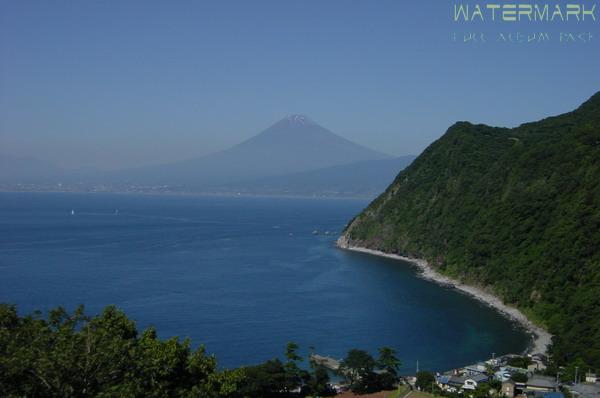
Juste before reaching Koibitomisaki, you will find a road, on your left, which leads you to the top of the
Darumayama - the Daruma mountain. From the top (982 m), a great view on the Fuji-san is offered. You can check the panoramic view
here.
Usugu - Koganezaki (黄金崎) - Great coast line
Heading south, you will reach Ugusu, with its beautiful coast scenery. The whole coast of the peninsula is a National Park, and therefore more or less protected. Ugusu is also famous for diving - diving is performed from the shore, and it is usual, during summer week-end, to have to queue to be able to go in the water. Don't miss the access road to the
Koganezaki Park: you will have to turn right before a tunnel, close to the Koganezaki Crystal Museum. Follow then the road until you reach the end of the road (you will see many divers on the shore), where the view on the coastal scenary is great.
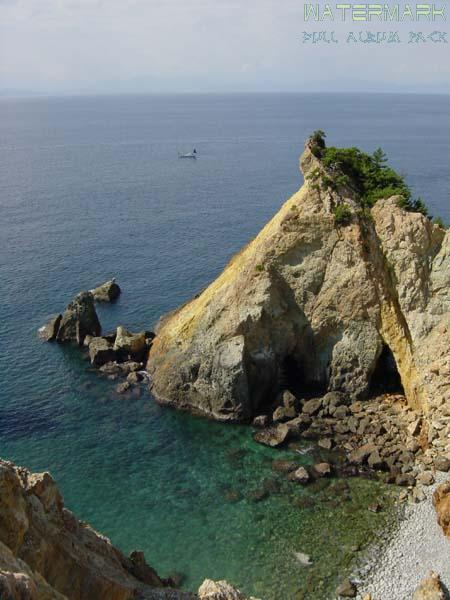
North of Dogashima - a hidden place with great view
Just before arriving in Dogashima, if you go out the main road and reach the coast, you will arrive in a small, isolated village with a beautiful view on a small bay. Leave your car there, and start to walk along the shore heading north. Although this is in no tourist guides, you will reach after 15-20 minutes one of the best points of Izu: a remote place, which looks like a tiny peninsula, from which you have a 300 degrees view on the ocean! Fabulous spot, really, with incredible panorama.
 Dogashima
Dogashima (堂ヶ島)
Dogashima is the most popular spot on west coast. Too much popular, in my opinion. It is still worth to stop for a while and enjoy the view, as the town is forming a small bay partially closed with islands. A boat tour, which can last just a couple of minutes, will bring you around those islands, including inside a natural cave, Tensodo. There is also a relatively nice beach, Norihama beach, and three island which can be reached easily (Sanshiro islands)
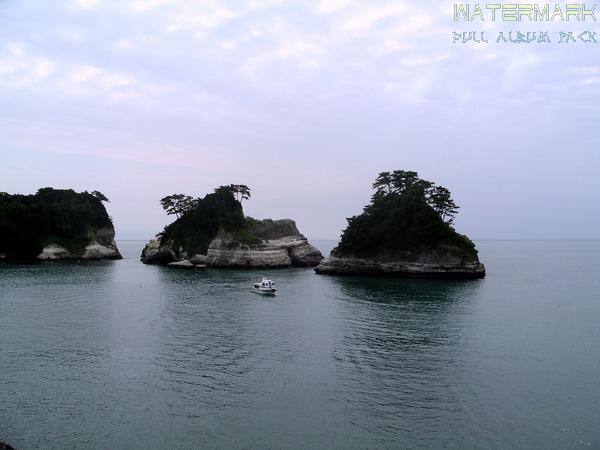 Sawada Park
Sawada Park (沢田公園) - the best onsen in Japan?
In Dogashima, you also will find a fabulous rotenburo (outside hot spring). But you will need to search for it! Pass the big hotels, and try to reach the small harbour where fishermen's boats are located. From there, continue at the end of the jetty, heading north, and you will reach Sawada Park Onsen.
Sawada Park Onsen is an unique rotemburo, located right on the edge of a cliff and overlooking the sea. We were lucky to be almost the only ones in the onsen (during busy time, it's standing place only !), and to have a marvellous weather. Look at the panorama from the bath...

More onsen in Izu on
Destination Onsen.
Sawada Park Onsen
Matsuzaki (松崎) - diving and relaxing in a ryokan
Located south of Dogashima, Matsuzaki is also a famous diving spot. You will however notice that the souther you go, the less people you encounter...
Here are the rocks around which the diving takes place...
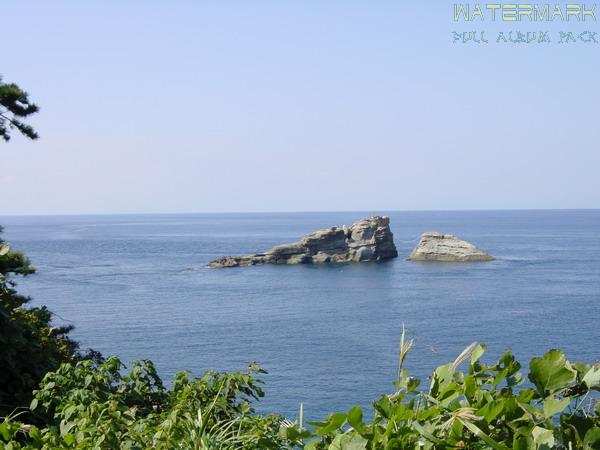
The area is much quieter than the rest of the peninsula. To make the experience even better, you can stay in one of the beautiful ryokan of the area. For example,
Osawa Onsen Hotel. This ryokan, located close to Matsuzaki, with some of its buildings being older than 400 years, displays a beautiful garden, marvellous food and an incredible onsen. Drinking some green tea in front of the room, soaking in the rotemburo made of stone or the wooden inside bath surrounded by plants can easily make you forget all troubles of life. At least for the night... since the bill usually reached 20'000 yens per person!

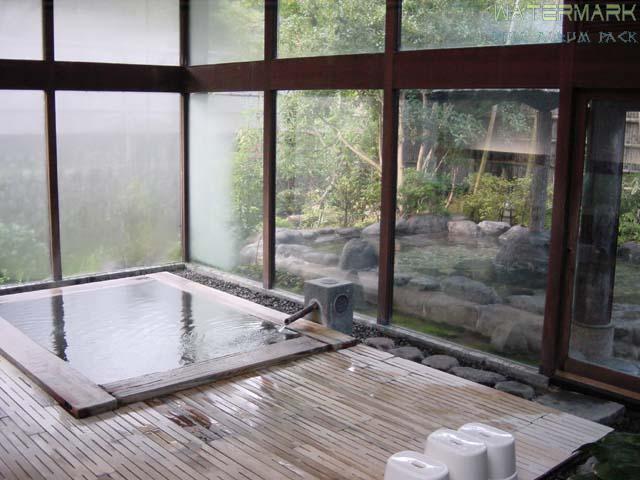
From Matsuzaki, you can cross through the land to reach Shimoda, on the southern east coast, go to teh southern tip of the peninsula (which is really wild) or come back via the west coast.
Extra material